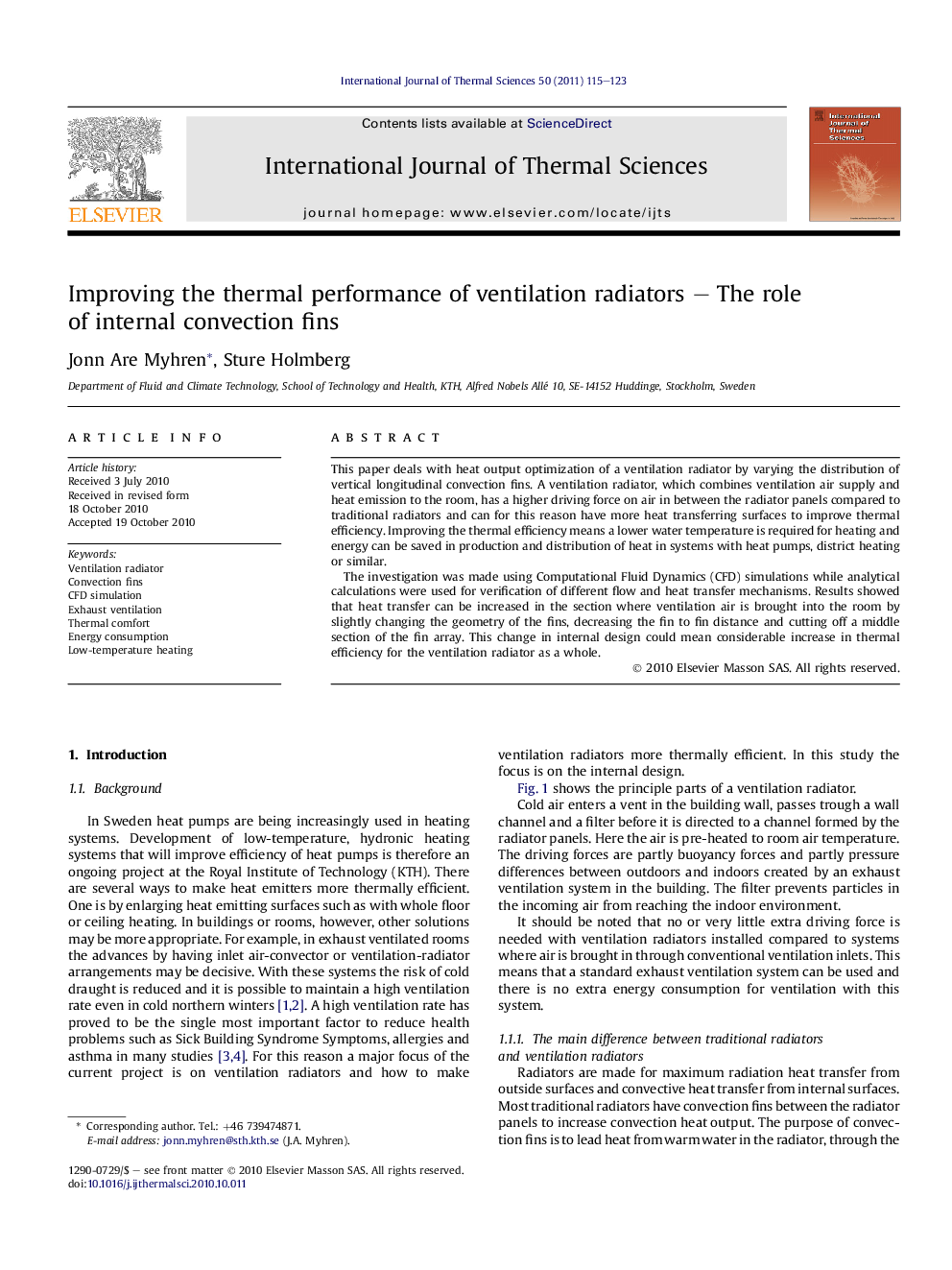| Article ID | Journal | Published Year | Pages | File Type |
|---|---|---|---|---|
| 670201 | International Journal of Thermal Sciences | 2011 | 9 Pages |
This paper deals with heat output optimization of a ventilation radiator by varying the distribution of vertical longitudinal convection fins. A ventilation radiator, which combines ventilation air supply and heat emission to the room, has a higher driving force on air in between the radiator panels compared to traditional radiators and can for this reason have more heat transferring surfaces to improve thermal efficiency. Improving the thermal efficiency means a lower water temperature is required for heating and energy can be saved in production and distribution of heat in systems with heat pumps, district heating or similar.The investigation was made using Computational Fluid Dynamics (CFD) simulations while analytical calculations were used for verification of different flow and heat transfer mechanisms. Results showed that heat transfer can be increased in the section where ventilation air is brought into the room by slightly changing the geometry of the fins, decreasing the fin to fin distance and cutting off a middle section of the fin array. This change in internal design could mean considerable increase in thermal efficiency for the ventilation radiator as a whole.
